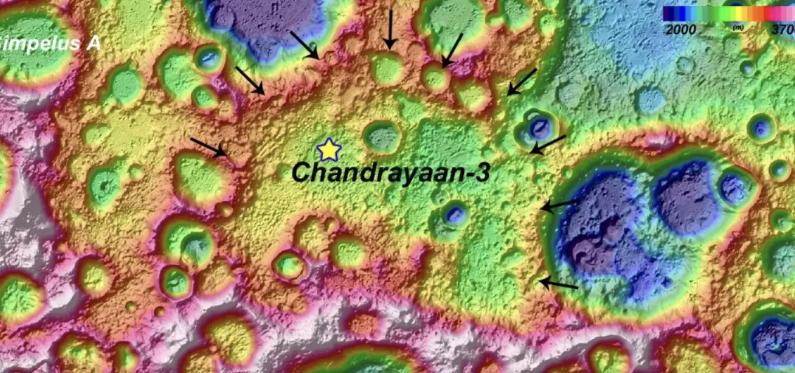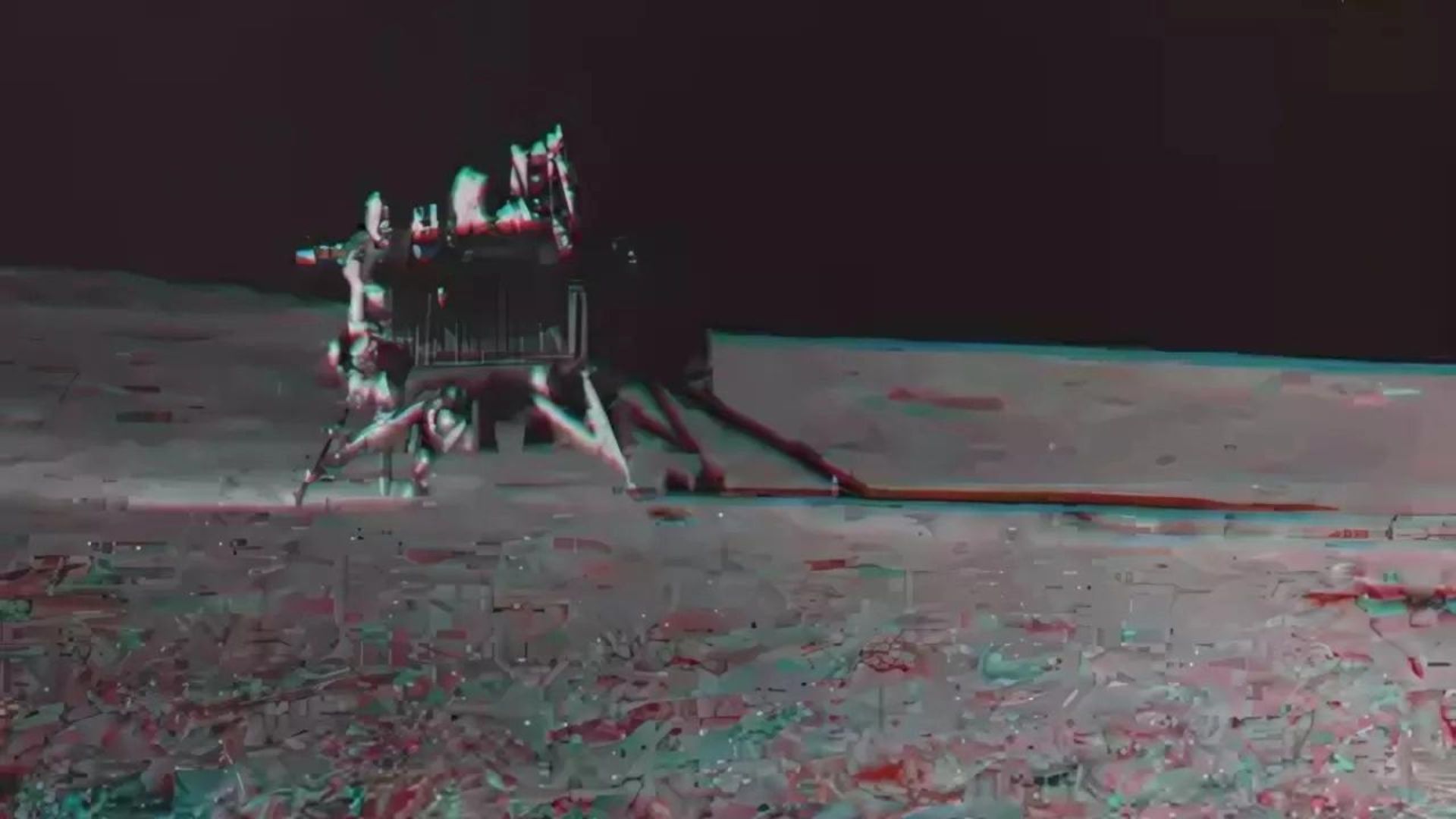In a paper appearing today in the journal Icarus, scientists from PRL and ISRO have determined that India’s Chandrayaan-3 landed within an impact crater deeply buried beneath the surface of the Moon. This impact crater is estimated to be 160 km wide and 4.4 km deep, older than the South Pole-Aitken basin, and is considered one of the oldest craters on the Moon.
The observation was supported by image interpretation provided by the Chandrayaan-3 Pragyan rover’s Navigation Cameras and the Chandrayaan-2 Orbiter’s Optical High-Resolution Camera. “The Chandrayaan-3 mission with the Vikram lander and the Pragyan rover has successfully landed in the high latitude highland region close to the south pole of the Moon, ISRO said. The landing site is around ~350 km from the South Pole-Aitken basin rim, which is an ancient and the largest impact basin in the Solar System,” ISRO stated.
Image Shared By ISRO:

The black arrow is pointing toward the edge of the semi-circular buried impact crater where the Chandrayaan-3 mission made landing. SLDEM draped over the hill shade image is utilized to highlight the semi-circular structure that served as the destination for landing.
“This landing site has witnessed the complex emplacement sequence of SPA basin ejecta followed by the nearby and distant impact basins and complex crater ejecta materials. We found that the SPA basin is the major contributor, which deposited nearly ~1400 m of ejecta materials, and 11 other basins deposited ~580 m of ejecta,” ISRO added.
The space agency said ejecta contributed up to 90 m from other complex craters, and secondary craters a few kilometers in diameter close to the Vikram lander contributed 0.5 m of ejecta, which are important target materials for the in-situ analysis by the Pragyan rover.
Further detailed geomorphological and topographical analysis revealed that the semi-circular structure is a heavily degraded crater structure or a buried impact crater with a diameter of ~160 km. This semi-circular structure was highly degraded due to the mantling of thick ejecta deposits from the SPA basin and followed by many other complex craters throughout the geological history of the Moon,” ISRO concluded.























